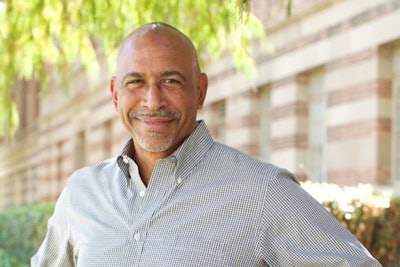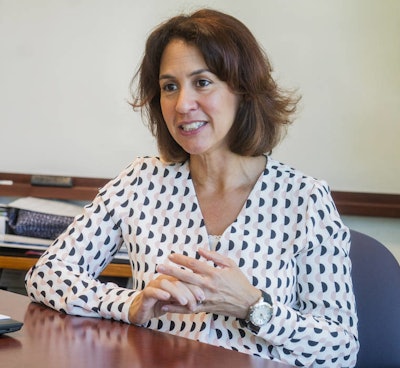 Dr. Pedro Noguera, Emery Stoops and Joyce King Stoops Dean of the Rossier School of Education at the University of Southern California
Dr. Pedro Noguera, Emery Stoops and Joyce King Stoops Dean of the Rossier School of Education at the University of Southern California
“At this moment, we need faculty of color who are speaking about the ways in which race and diversity are shaping our society,” said Dr. Pedro Noguera, the Emery Stoops and Joyce King Stoops Dean of Rossier, who is one of the nation’s most influential education scholars. “Other universities cannot take the position that there are not enough people of color out there to hire. What are they doing to build the pipeline? We’re showing that with a concerted effort and institutional support, it can be done."
Like many selective and wealthy peers, USC’s faculty numbers reveal stark racial, ethnic, and gender disparities. According to USC’s 2020 data, most full-time faculty, including tenure and non-tenure positions, are white and male. Of tenured faculty, just 33% are women—and only 3% identify as “Black or African” while 5% are “Hispanic or Latino.”
Since becoming Rossier’s dean in July 2020, Noguera and his team, especially Dr. Larry Picus, vice dean for faculty affairs and professor of education finance and policy, have sought to shake up those numbers.
“A lot of it was about just being assertive in our recruitment efforts and letting candidates know that we wanted them, that we really value what they bring with respect to the kind of scholarship they do that we need,” said Noguera. “And making sure that we’re creating a school that is responsive to the needs of our time, especially to faculty of color.”
The school recently hired 14 full-time faculty, 12 of whom are people of color. Of that total 14, six are women while eight are men. Not all names have been announced yet. Four of the new hires, all of whom are Black scholars, are for tenure or tenure-track positions. Most of the positions are non-tenure-track, multi-year contract faculty roles in teaching and/or research. USC calls these RTPC positions, which stands for research, teaching, professional, and clinical roles.
“If you cast a wide net, it’s not hard to find faculty of color,” said Picus, who led Rossier's recruitment efforts with Noguera. “They are there, doing great work. I also have to say that Pedro made a big difference this year in hiring. Everyone in our world knows who Pedro is. And I’ve yet to meet someone who doesn’t want to work with him at Rossier. Let me just say: he comes better than advertised. If I didn’t work here already, I can see why I’d come here.”
Dr. Julian Vasquez Heilig, dean of the University of Kentucky’s College of Education, applauded Rossier.
“[USC Rossier] should be commended for doing the work, especially because our research has found that these challenges are most acute at elite universities,” he said. “I think part of it is that when you have leaders of color in an institution, it sends a message to other faculty of color that there is a commitment to welcoming people of different backgrounds there. I myself as a dean [of color] would say that about once a week, faculty of color reach out to me.”
Last year at the University of Kentucky, 80% of the faculty hires were people of color. Heilig said that he wished they hit 100%, “but we think 80% is pretty good.” He noted it is “an outdated, racialized trope" when some institutions argue there are not enough candidates of color to hire.
 Dr. Christina Kishimoto, one of Rossier’s new contract faculty hires and former superintendent of Hawaii’s Department of Education
Dr. Christina Kishimoto, one of Rossier’s new contract faculty hires and former superintendent of Hawaii’s Department of Education
“I thought about how exciting it would be to start teaching policy and leadership with a real emphasis on race and gender equality to the next generation of superintendents,” said Kishimoto, who also previously served as the board president of the Association of Latino Administrators and Superintendents. “And for me, it’s really important who your boss is. To make sure you work for someone you align with and respect. Pedro is that.”
Kishimoto said that being raised in the Bronx in poverty shaped her focus on equity throughout her education career. To Rossier’s students, she plans to bring her experience and connections to public education leaders to discuss the sector’s pressing problems and solutions today.
“Rossier is saying that this is not hiring Black folks for the sake of hiring Black folks,” said one of the new tenure or tenure-track hires, who is a high-profile, Black education scholar. He asked to be unnamed as he has not yet publicly announced his move. “They are instead saying this is about people doing excellent academic work that is also centering marginalized voices. And you have a person leading the institution who has been a champion for that kind of work.”
The scholar added that such institutional support at this moment in the country especially matters.
“The nature of higher education for scholars of color today puts us in a very delicate position because it is glowingly apparent that institutions have not invested enough in not only our academic work but our emotional and social well-being,” he said. “Especially for scholars that center Black voices, it makes us wonder if it’s worth continuing this work when we are in an era where that work is dangerous. Where you have assaults on centering Black lives. You want to be at an institution that says to you that they support your work. Because when that support is not there, it’s hard to do the work.”
In addition, he said that cluster hires are important to diversifying mindfully, particularly to avoid tokenizing one new faculty of color or burdening that person with diversity, equity, and inclusion work.
Experts agree.
“If you come in and all eyes are on you, there can also be performance anxiety as well as a service load on being asked to join all these committees,” said Dr. Margaret Sallee, an associate professor of educational leadership and policy at the University at Buffalo, who researches gender equity among faculty. “More importantly, you may become that one professor who is sought after by students who want to see more faculty who look like them. That’s why the most successful institutions in this work are doing cluster hires.”
Noguera said that the backing of USC’s president, Dr. Carol L. Folt, has also been critical.
“The university created a fund for faculty diversity and basically told any school within USC that if you’re ready to hire outstanding faculty of diverse backgrounds, we’re ready to support it, and they have,” he said. “I give the USC president a lot of credit for that.”
University funding allowed Rossier to recruit more effectively. Tenure and tenure-track faculty positions, for instance, included housing support to attract candidates given that Los Angeles County is an expensive place to live.
Heilig stressed another key part is to make sure that faculty from underrepresented groups are not only brought to campus but supported there. He added that university leaders must be held accountable to deliver results for faculty recruitment as well as retention.
“For higher education to meet its responsibility as the century progresses, we must ensure that diverse faculty and staff find community on campus and stay,” he said. “We need to create the environment and climate where they become tenured, deans, presidents, leaders that have strategic vision for academic leadership.”
At Rossier, Picus said he and Noguera are excited about what comes next.
“I’m not big on using words like ‘transformational,’ but I do think this is a transformational hire combined with other hires we’ve made in recent years,” said Picus. “It takes faculty with that commitment to hire other faculty with that commitment. You won’t get it unless you have that.”
Rebecca Kelliher can be reached at [email protected].






















